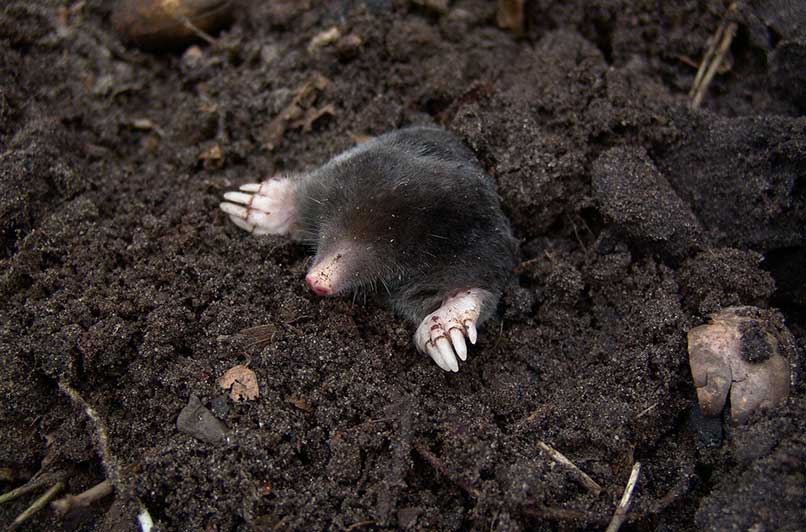
Can You Prevent Mole Hills?
Identification
Mole hills are a sight many property owners dread because mole infestations are destructive and challenging to eradicate. Distinguishing mole hills from other lawn blemishes can be difficult, but identifying mole presence in yards is the first step toward removal. In contrast to gopher hills, mole hills are circular, conical, and have no dips in the center. They can be up to a foot wide and usually measure two inches tall. Additionally, moles leave tunnel tracks throughout lawns in their search for food. As moles move about just under the surface of the ground, they push around the topsoil, which can shift grasses and shrubs. While the animals mostly eat insects, flower beds and expensive landscaping is at risk in the presence of mole infestations.
Mole Digging
As adept diggers, moles accomplish great feats with their front legs, which support multiple thumbs and broad claws. Mole claws are turned outward, which allows for greater digging capacity. Used in conjunction with their powerful legs, mole snouts are shaped so the animals can easily manipulate dirt into their desired formation.
Damage & Removal
Although the pests mostly reside underground and do not spread diseases like many other animal nuisances, their hills and tunnel systems weaken the ground and ruin landscaping. Moles upturn grass and wreak havoc on gardens all in the name of constructing their subterranean dens. As such, it is important to eradicate the pests before their tunnel systems become so extensive as to destroy entire yards. However, finding and keeping moles out of the yard is near impossible without some professional help. Call the wildlife removal specialists at Critter Control for efficient and humane mole removal.
Learn more about mole removal.
Get them out.
Keep them out.®
Experiencing a wildlife or pest issue? We can help! Complete this form and your local Critter Control® office will contact you to assist.
- How to Get Rid of Moles in Your Yard
- Moles in the Garage
- Moles in the House
- Mole Trapping
- Moles in the Basement
- Moles in the Garden
- How to Identify Moles in Yard
- Moles vs. Voles
- Do Moles Bite?
- Do Moles Carry Disease?
- Eastern Moles
- Hairy-Tailed Moles
- Mole Repellent
- Mole Tracks
- Shrew Moles
- Star-Nosed Moles
- Types of Moles
- Mole Diet
- What Is a Mole?
- Damage Caused by Moles
- Mole Identification
- Mole Droppings
- Mole Appearance